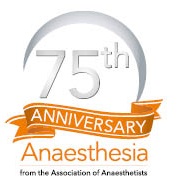Controlled ventilation in medical practice

Anæsthesia 1961; 16: 285-307.
O. P. Norlander, V. O. Björk, C. Crafoord, O. Friberg, M. Holmdahl, A. Swensson and B. Widman
Introduction
During the extensive epidemics of poliomyelitis in Scandinavia
1950-3 it was soon found out that controlled ventilation achieved
by intermittent positive pressure ventilation could save a large
number of patients hitherto having a high rate of mortality. Great
experience was gained with this kind of treatment especially
regarding the performance and the physiological effects of
different types of mechanical ventilators.
With this knowledge it was apparent that the principles for
controlled ventilation should be applicable also to patients
after major thoracic surgery with ventilatory insufficiency. The
successful results of this treatment with the Engström Respirator
were first published in 1955 and 1957. From that time the method
of prolonged controlled ventilation after surgical or accidental
trauma as described by Björk and Engström has been widely
accepted at most Swedish hospitals. The method has also found
a wider application for other indications and diseases where the
respiratory system has been pathologically changed, as it was
evident that the application of ventilation with the Engström
Respirator per se could be regarded as involving very little risk to
the patients.
This Swedish paper followed nine years after the groundbreaking
use of positive pressure ventilation during the Danish
polio epidemic, when a 12-year old girl in Copenhagen was
hand-ventilated because of a shortage of the then-conventional
‘iron lungs’. Descriptions of using the Engström Respirator
between 1955-60 capture the excitement of this paradigm shift
in treatment. This volume-controlled device had an insufflation
balloon that connected safely to the patient, an I:E ratio of 1:2,
and limited the next mechanical inspiratory volume if a patient
took a spontaneous breath. A nomogram was provided to
calculate the required minute volume from the patients’ height,
weight, sex and age, plus a fever correction of +5% for each
0.5°C above 37.5°C. Ventilation pressures were not monitored,
and the expiratory resistance was set near zero unless there was
pulmonary oedema. Tracheostomy was advocated “as soon as
possible” for patients that “might develop…hypoventilation” using
thin-walled silver tubes with air-tight cuffs, a step up from rubber
tubes that risked tracheal pressure necrosis.
Their 52% survival in 522 patients was gratifyingly high,
considering the range of sizes and ages, degree of sickness, and
the relatively infancy of many other available medical treatments.
Patients undergoing major lung surgery for pulmonary
tuberculosis did very well, as did people with acute exacerbations
of COPD, but patients with severe cerebral trauma continued to
have a 100% mortality. Survival after acute haemodialysis rose
from zero to about one-third, and for the first time 55% of adults,
but no small children, survived pioneering open-heart surgery.
Remarkably, two of eight babies < 1600 g survived tracheooesophageal
fistula surgery.
It is fascinating to revisit this landmark paper while facing
another viral pandemic in which resources remain insufficient
worldwide, and the shortcomings of positive pressure ventilation
are being increasingly recognised. We have much to learn if
we are to avoid the complications of sedation and intubation,
tracheostomy, reduction in cardiac output, pneumothorax, and
alveolar microtrauma and inflammation generating parenchymal
lung injury. These considerations have led to a resurgence of
interest in small efficient negative pressure devices such as the
new Exovent [1], which can provide physiological equivalents of
CPAP and PEEP as well as ventilation in awake patients who are
able to eat, drink and speak, and which are likely to avoid airleaks
and lung injury. Since necessity drives invention, there is no
doubt that the vast challenges posed by pandemics have and will
continue to profoundly influence anaesthetic and other medical
developments.
Malcolm G. Coulthard
Honorary Consultant Paediatric Nephrologist,
Great North Children’s Hospital, Newcastle
Member of the Exovent Development Team
References
- The Exovent Development Group. Exovent: a study of a new
negative-pressure ventilatory support device in healthy adults.
Anaesthesia 2021; 76: 623-8.